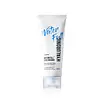What's inside
What's inside
 Key Ingredients
Key Ingredients

 Benefits
Benefits

 Concerns
Concerns

No concerns
 Ingredients Side-by-side
Ingredients Side-by-side

Water
Skin ConditioningGlycerin
HumectantTranexamic Acid
AstringentAlpha-Arbutin
AntioxidantButylene Glycol
HumectantAcetamidoethoxyethanol
HumectantChamomilla Recutita Flower Extract
MaskingPanthenol
Skin ConditioningAmmonium Acryloyldimethyltaurate/Vp Copolymer
Phenoxyethanol
PreservativeSodium Acrylates Copolymer
Lecithin
EmollientLysine
Skin ConditioningHistidine
HumectantArginine
MaskingAspartic Acid
MaskingThreonine
Serine
MaskingGlutamic Acid
HumectantProline
Skin ConditioningGlycine
BufferingAlanine
MaskingValine
MaskingIsoleucine
Skin ConditioningLeucine
Skin ConditioningTyrosine
MaskingPhenylalanine
MaskingEthylhexylglycerin
Skin ConditioningMenthyl Lactate
MaskingPPG-26-Buteth-26
Skin ConditioningPEG-40 Hydrogenated Castor Oil
EmulsifyingWater, Glycerin, Tranexamic Acid, Alpha-Arbutin, Butylene Glycol, Acetamidoethoxyethanol, Chamomilla Recutita Flower Extract, Panthenol, Ammonium Acryloyldimethyltaurate/Vp Copolymer, Phenoxyethanol, Sodium Acrylates Copolymer, Lecithin, Lysine, Histidine, Arginine, Aspartic Acid, Threonine, Serine, Glutamic Acid, Proline, Glycine, Alanine, Valine, Isoleucine, Leucine, Tyrosine, Phenylalanine, Ethylhexylglycerin, Menthyl Lactate, PPG-26-Buteth-26, PEG-40 Hydrogenated Castor Oil
Water
Skin ConditioningButylene Glycol
HumectantGlycerin
HumectantCaprylyl Methicone
Skin ConditioningPentylene Glycol
Skin Conditioning1,2-Hexanediol
Skin ConditioningChlorella Vulgaris Extract
Skin ConditioningMalachite Extract
AntioxidantBifida Ferment Filtrate
Skin ConditioningBifida Ferment Lysate
Skin ConditioningLactobacillus Ferment Lysate
Skin ConditioningLactococcus Ferment Lysate
Skin ConditioningSaccharomyces Ferment Filtrate
HumectantPolymnia Sonchifolia Root Juice
Skin ConditioningHyaluronic Acid
HumectantHydrolyzed Hyaluronic Acid
HumectantSodium Hyaluronate
HumectantPancratium Maritimum Extract
BleachingCetearyl Olivate
Hydrogenated Polydecene
EmollientSorbitan Olivate
EmulsifyingDimethicone/Vinyl Dimethicone Crosspolymer
Skin ConditioningGlucose
HumectantTromethamine
BufferingAmmonium Acryloyldimethyltaurate/Vp Copolymer
Hydroxyacetophenone
AntioxidantAcrylates/C10-30 Alkyl Acrylate Crosspolymer
Emulsion StabilisingFructooligosaccharides
HumectantFructose
HumectantSodium Phytate
Silica
AbrasiveEthylhexylglycerin
Skin ConditioningAlpha-Glucan Oligosaccharide
CleansingMaltodextrin
AbsorbentLactobacillus
Skin ConditioningCarbomer
Emulsion StabilisingWater, Butylene Glycol, Glycerin, Caprylyl Methicone, Pentylene Glycol, 1,2-Hexanediol, Chlorella Vulgaris Extract, Malachite Extract, Bifida Ferment Filtrate, Bifida Ferment Lysate, Lactobacillus Ferment Lysate, Lactococcus Ferment Lysate, Saccharomyces Ferment Filtrate, Polymnia Sonchifolia Root Juice, Hyaluronic Acid, Hydrolyzed Hyaluronic Acid, Sodium Hyaluronate, Pancratium Maritimum Extract, Cetearyl Olivate, Hydrogenated Polydecene, Sorbitan Olivate, Dimethicone/Vinyl Dimethicone Crosspolymer, Glucose, Tromethamine, Ammonium Acryloyldimethyltaurate/Vp Copolymer, Hydroxyacetophenone, Acrylates/C10-30 Alkyl Acrylate Crosspolymer, Fructooligosaccharides, Fructose, Sodium Phytate, Silica, Ethylhexylglycerin, Alpha-Glucan Oligosaccharide, Maltodextrin, Lactobacillus, Carbomer
 Reviews
Reviews

Ingredients Explained
These ingredients are found in both products.
Ingredients higher up in an ingredient list are typically present in a larger amount.
Ammonium Acryloyldimethyltaurate/Vp Copolymer (let's call it AAVC for short) is a synthetically created polymer. It's used as a film-forming agent and used to thicken the consistency of products.
AAVC is able to increase the consistency and viscosity of products due to its large molecule size. It also prevents ingredients from separating.
Butylene Glycol (or BG) is used within cosmetic products for a few different reasons:
Overall, Butylene Glycol is a safe and well-rounded ingredient that works well with other ingredients.
Though this ingredient works well with most skin types, some people with sensitive skin may experience a reaction such as allergic rashes, closed comedones, or itchiness.
Learn more about Butylene GlycolEthylhexylglycerin (we can't pronounce this either) is commonly used as a preservative and skin softener. It is derived from glyceryl.
You might see Ethylhexylglycerin often paired with other preservatives such as phenoxyethanol. Ethylhexylglycerin has been found to increase the effectiveness of these other preservatives.
Glycerin is already naturally found in your skin. It helps moisturize and protect your skin.
A study from 2016 found glycerin to be more effective as a humectant than AHAs and hyaluronic acid.
As a humectant, it helps the skin stay hydrated by pulling moisture to your skin. The low molecular weight of glycerin allows it to pull moisture into the deeper layers of your skin.
Hydrated skin improves your skin barrier; Your skin barrier helps protect against irritants and bacteria.
Glycerin has also been found to have antimicrobial and antiviral properties. Due to these properties, glycerin is often used in wound and burn treatments.
In cosmetics, glycerin is usually derived from plants such as soybean or palm. However, it can also be sourced from animals, such as tallow or animal fat.
This ingredient is organic, colorless, odorless, and non-toxic.
Glycerin is the name for this ingredient in American English. British English uses Glycerol/Glycerine.
Learn more about GlycerinWater. It's the most common cosmetic ingredient of all. You'll usually see it at the top of ingredient lists, meaning that it makes up the largest part of the product.
So why is it so popular? Water most often acts as a solvent - this means that it helps dissolve other ingredients into the formulation.
You'll also recognize water as that liquid we all need to stay alive. If you see this, drink a glass of water. Stay hydrated!
Learn more about Water